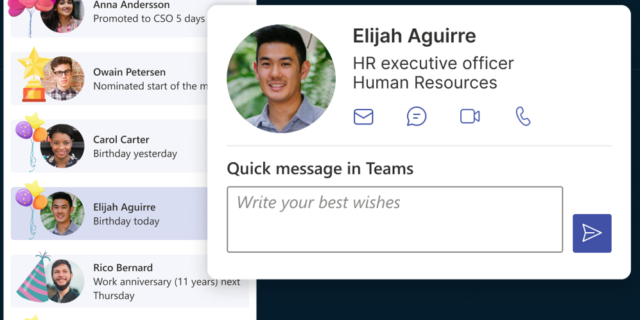Gaps between generations are a very real thing, from language (no cap) to ways that we perceive the world. Every generation is unique and there are factors that contribute to those differences. In this post, we’ll explore those gaps, what factors contributed to them and most importantly, how to design an Intranet for all generations.
Introduction
The following content was generated via collaboration with David Bowman from Fresh Intranet. We created this content jointly and delivered a webinar, “Bridging the Generational Gaps with an Intranet,” which can be found here: https://www.klarinetsolutions.com/resources/webinars/unified-engagement/
In this blog we will cover the following:
- The Importance of Intranets
- The Purpose of the Intranet Home Page
- Understanding Generational Differences
- How to Design an Intranet for all Generations
First, let’s review why Intranets and Home Pages are important.
The Importance of Intranets
Intranets have two main purposes:
- To act as a Resource Hub: a central repository for internal resources, providing employees with easy access to important documents, policies, and tools.
- To serve as a Communication Tool: foster communication and build relationships across different departments and geographic locations.
The purpose of the Intranet Home Page
Have you ever come home after a long trip that you didn’t want to go on? You know that feeling when you are just about to reach your house. It’s an emotional response. Relief, maybe. The feeling of “coming home.” Hopefully it’s a positive feeling.
That’s the feeling that we’re looking to create on an Intranet Home Page. An emotional connection of familiarity and possibly relief.
Considering these viewpoints, let’s dive into generations to see what content will resonate with each.
Understanding Generational Differences
First, let’s recognize that generations are formed through external influencing factors, of which there are three main factors.
Influencing Factors:
- Parenting: Different parenting styles have shaped each generation’s values and behaviors.
- Technology: The technology available during their formative years has influenced how each generation interacts with the world.
- Economics: Economic conditions during their upbringing have impacted their financial outlook and career aspirations.
Generational Breakdown:
- Boomers (1946-1964): Experienced significant technological advancements and economic changes during their lifetime.
- Gen X (1965-1980): Known as the “latchkey kids,” they value independence and work-life balance.
- Millennials (1981-1995): Grew up with the internet and social media, value teamwork, diversity, and shared values.
- Gen Z (1996-2010): Raised with smartphones and social media, they value inclusion, individual contributions, and learning.
Design for Each Generation
Boomers (61-79 years old):
- Key Values: Financial security, loyalty, hard work, connection, mentoring.
- Design Considerations: Structured content, clear communication, single source of truth, instructional content.
Gen X (45-60 years old):
- Key Values: Financial stability, independence, work-life balance.
- Design Considerations: Personalization, dashboards, role-specific content, management tools.
Millennials (29-44 years old):
- Key Values: Teamwork, diversity, work-leisure balance, shared values.
- Design Considerations: Experiential content, video, peer-to-peer messaging, infographics.
Gen Z (15-28 years old):
- Key Values: Inclusion, individual contributions, learning, purpose of work.
- Design Considerations: Mobile-first design, heavy personalization, interactive content, enterprise social platforms, AI-driven Q&A.
Bridging the Generational Gaps
Examples from Fresh Intranet:
Boomers
Traditional news content, structured policy access, regular publishing schedule.
Generation X
Management tools, personalized dashboards, role-specific landing zones.
Millennials
People-oriented content, video town halls, peer-to-peer messaging, infographics.

Gen Z
User-generated content, AI-driven Q&A, mobile-first design.
Conclusion
Intranets are vital tools for connecting employees and fostering communication in today’s diverse workplace. By understanding generational differences and implementing practical design tips, you can bridge the generational gaps in your organization and create an inclusive and engaging intranet for all employees. Evaluate your current intranet and consider how you can make it more effective for your organization.